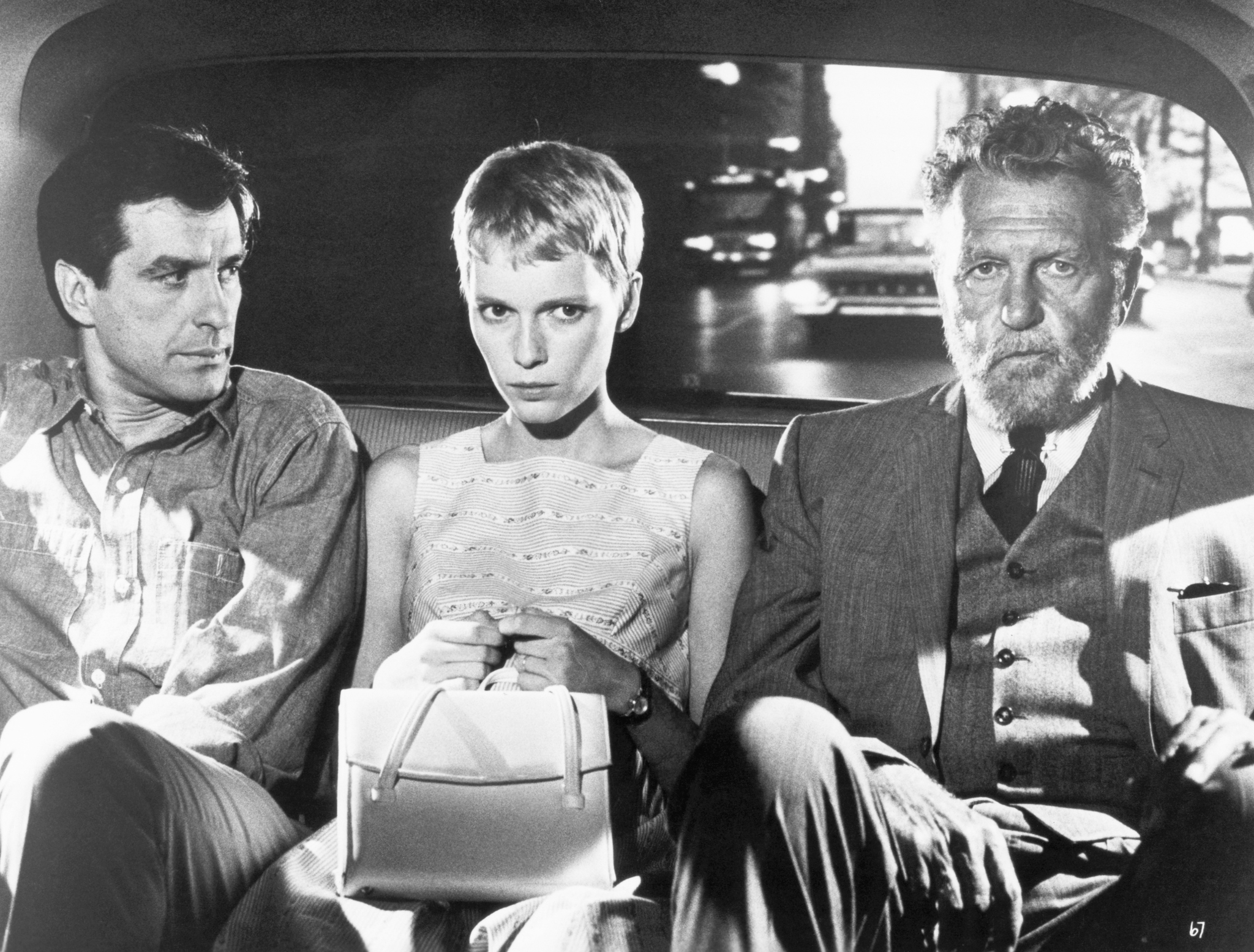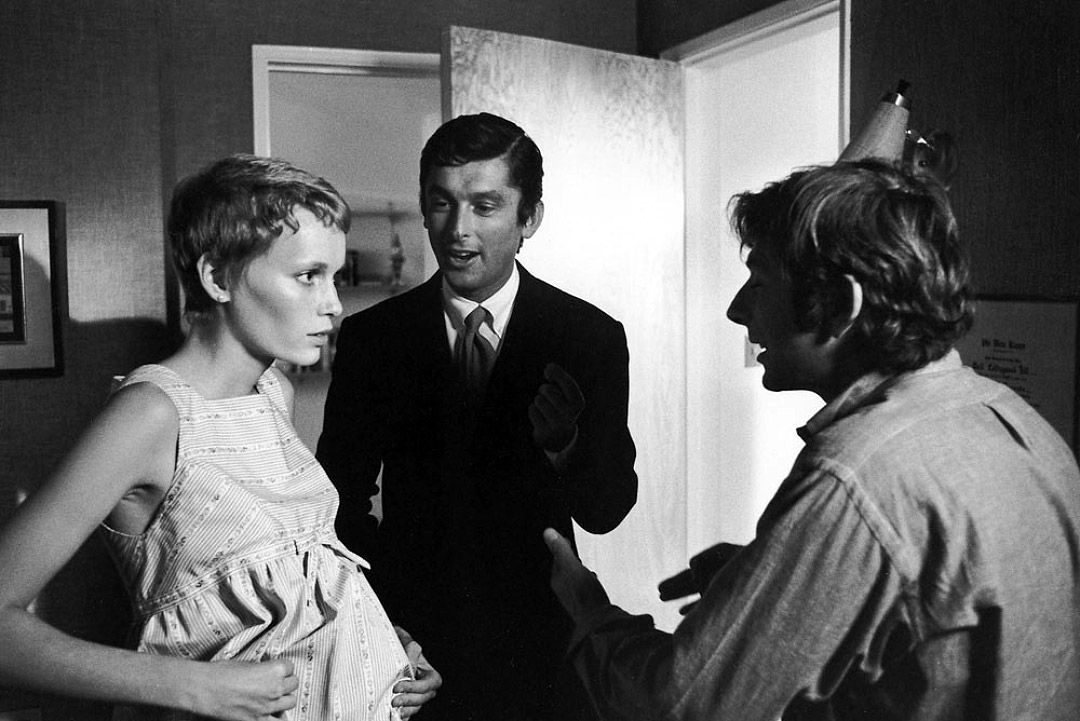“Rosemary’s Baby” (1968)

Directed by Roman Polanski and based on the novel by Ira Levin, “Rosemary’s Baby” is a psychological horror film released in 1968 that remains a seminal work in the genre. Set in New York City, the film weaves a tale of suspense and supernatural intrigue centered around Rosemary Woodhouse (played by Mia Farrow), a young wife whose life takes a dark and disturbing turn after she becomes pregnant.
The narrative unfolds with Rosemary and her husband Guy (played by John Cassavetes) moving into an old and eerie apartment building known for its mysterious past. They befriend their eccentric neighbors, the Castevets, particularly Minnie (played by Ruth Gordon) and Roman (played by Sidney Blackmer), who take a keen interest in Rosemary’s well-being. As Rosemary’s pregnancy progresses, she experiences increasingly disturbing hallucinations and physical ailments, leading her to suspect that something sinister is at play.

“Rosemary’s Baby” is notable for its slow-building tension and psychological depth. Roman Polanski’s direction creates an atmosphere of claustrophobia and paranoia, gradually enveloping the audience in Rosemary’s growing sense of dread and isolation. The film’s pacing allows for the gradual unraveling of the central mystery, keeping viewers on edge as they piece together the ominous clues surrounding Rosemary’s pregnancy and the true intentions of the Castevets.
Central to the film’s horror is the theme of motherhood and the loss of control over one’s own body. Rosemary’s journey from excitement about her pregnancy to terror and helplessness mirrors the anxieties and fears associated with the maternal experience. Mia Farrow’s nuanced performance captures Rosemary’s vulnerability and resilience, portraying a woman caught in a web of manipulation and malevolent forces beyond her comprehension.

Thematically, “Rosemary’s Baby” explores the concept of trust and betrayal within intimate relationships. The film raises questions about the extent to which individuals are willing to sacrifice their morals and autonomy in exchange for power, success, or societal acceptance. Guy’s transformation from a loving husband to a calculating opportunist underscores the film’s critique of ambition and the corrupting influence of ambition and societal pressures.
Visually, “Rosemary’s Baby” is characterized by its minimalist set design and use of shadow and light to create a sense of foreboding. The eerie atmosphere of the apartment building, coupled with Polanski’s masterful framing and cinematography, enhances the film’s unsettling tone and underscores the supernatural elements lurking beneath the surface of everyday life.

Beyond its horror elements, “Rosemary’s Baby” is also a commentary on gender roles and autonomy. Rosemary’s struggle against patriarchal authority and manipulation resonates as a feminist critique of societal expectations placed upon women, particularly in the context of motherhood and reproductive rights.
In conclusion, “Rosemary’s Baby” (1968) remains a chilling and thought-provoking exploration of horror and psychological suspense. Through its atmospheric direction, compelling performances, and thematic depth, the film continues to captivate audiences with its portrayal of maternal terror and the insidious nature of evil. Roman Polanski’s vision, combined with Ira Levin’s haunting story, ensures that “Rosemary’s Baby” endures as a timeless classic that challenges perceptions of horror and the human psyche.











